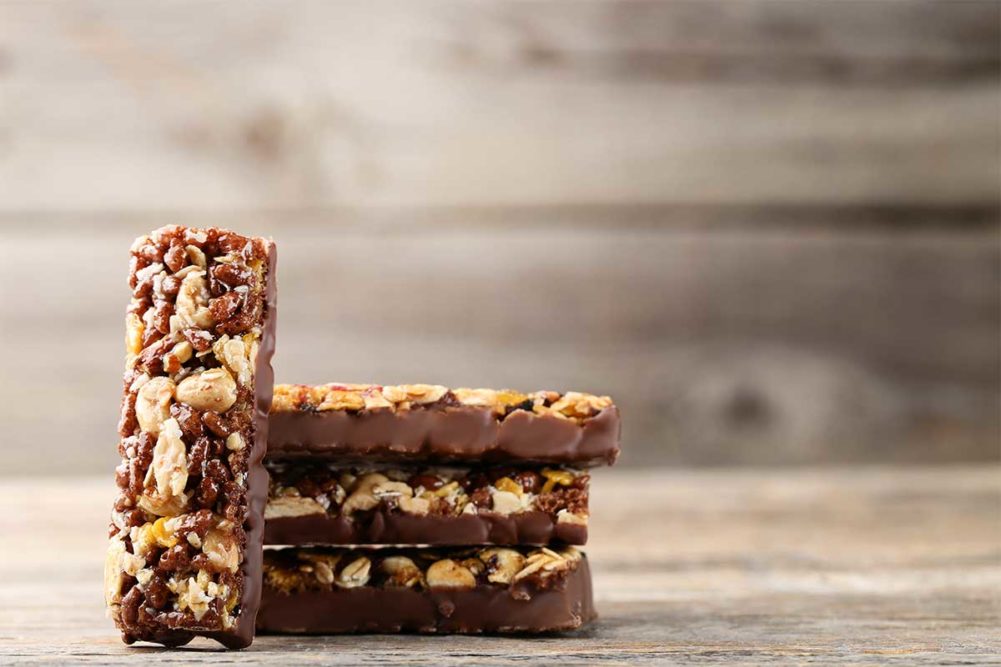Masking flavors have become almost necessary in high-protein baked goods, which historically have not been considered a delivery vehicle for protein ingredients. This is precisely why protein fortification continues to trend in the baked goods sector. It’s a convenient way to make these carbohydrate-laden foods more attractive to the growing number of consumers who want more protein in their diet.
When it comes to protein fortification, most bakers opt for plant-based options to keep products vegan, or at least dairy free. To add enough plant protein to make a content claim — a “good source of protein” claim must provide more than 10% of the Daily Value (DV) of protein per serving, while products making an “excellent source of protein” claim must contain more than 20% DV — bakers will often blend plant proteins, as using one plant protein by itself may create challenges with taste and texture. Even blends often require some assistance from masking flavors.
“Sports performance consumers are often looking for different delivery formats outside of the traditional high-protein bar, whether it be cookies, brownies or muffins,” said Erik Williams, applications manager-health and wellness and beverage, Virginia Dare Extract Co. “Plant-based, non-allergen, high-protein bakery is no longer a trend. It’s here to stay.
“Common plant protein sources include pea, brown rice, chickpea, fava bean, quinoa, pumpkin seed and hemp,” he continued. “These proteins often create taste challenges such as bitter, earthy, beany and barny off-flavors. Using masking flavors will reduce these off-flavors and increase the desirable flavors in the bakery product.”
He cited the example of a baker who decided to launch a plant-based version of their high-protein chocolate chip cookie that contains 20 grams of protein per serving.
“After switching from whey protein to pea and brown rice protein, they were getting very earthy and bitter flavors,” Mr. Williams explained. “By using a special masking system designed to reduce bitter notes and also mask the protein off-notes from pea and brown rice protein, the developer was able to improve upon the flavor using a single masking system while keeping their original chocolate chip flavor profile.”
Building on the plant-based trend, bakers are increasingly exploring the addition of whole, identifiable nuts and seeds for crunch and visual appeal. Being high in fat, care must be taken to prevent oxidation. Masking flavors may assist with hiding any rancid off-notes that may be produced towards the end of the baked goods’ shelf life. Nut, legume and vegetable flours are being added to support plant-based claims. These flours may also benefit from masking flavors.
“The addition of omega-3 fatty acids can signal to consumers that they may gain heart health and balanced inflammation benefits,” Ms. Santoro said. “However, omega-3 ingredients like flaxseed or isolated docosahexaenoic acid can give off a fishy smell and taste. Flavor masking technology helps make these fishy notes less pronounced for a satisfactory grain-based baked good.”
While plant proteins are gaining traction in baked goods, dairy proteins stay popular because of their quality and ease of use. Still, they may require some masking flavor assistance.
“High amounts of dairy protein can contribute off-notes such as a cardboard, cooked and denatured protein, and green, grassy notes,” said Renata Rojek, principal scientist and lab technician supervisor, The Edlong Corp. “In a high-protein cookie, we used clotted cream and butter flavor to mask the off-notes. Additionally, we selected a chocolate flavor to provide a characterizing flavor and it added some permissible indulgence to the cookie.
“In a high-protein almond biscotti bar that included 16% whey protein, we added a cultured cheesecake flavor as a masking agent,” she continued. “It masked the bitter, cardboard, animal/wet dog and astringent off-notes. It also added a sweet dairy characterizing profile with fresh cultured notes, adding indulgence to the protein bar for a more enjoyable taste experience.”
This article is an excerpt from the May 2021 issue of Baking & Snack. To read the entire feature on Flavors, click here.






